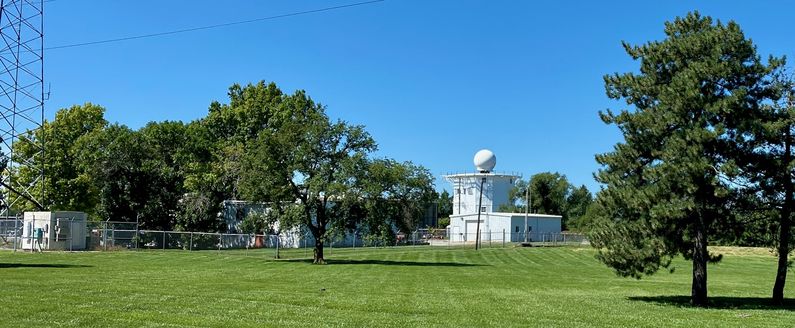Olathe Air Force Station
|
Olathe Air Force Station (1951-1968) - A Cold War Air Force Radar Station first established in 1951 near Olathe, Johnson County, Kansas. Named Olathe Air Force Station after the location. Initially assigned a Permanent ID of P-72 and later a Sage ID of Z-72. Abandoned in 1968.
History of Olathe Air Force StationEstablished in 1951 and became operational 1 Jun 1951 manned by the 130th AC&W Squadron. The 130th AC&W was a Utah Air National Guard unit activated for 21 months during the Korean War. Operated as a tenant unit on Olathe Naval Air Station (NAS) near Olathe, Kansas. The station initially had both a Ground-Control Intercept (GCI) and an early warning mission. The early warning mission involved tracking and identifying all aircraft entering their airspace while the GCI mission involved guiding Air Force interceptors to any identified enemy aircraft. Controllers at the station vectored fighter aircraft at the correct course and speed to intercept enemy aircraft using voice commands via ground-to-air radio. Initial equipment included the FPS-3 search radar and a CPS-4 height-finder radar. On 1 Feb 1953, the 130th AC&W was relieved from active duty and replaced by regular Air Force personnel with the 738th AC&W Squadron. SAGE System TransitionThe transition of the manual GCI system to the automated SAGE system began with the installation of the FST-2 coordinate data transmitter and search radar upgrades. The FST-2 equipment digitized the radar returns and transmitted the digital returns to the SAGE direction center. Under the SAGE System, interceptor aircraft were directed to their targets by the direction center computers and controllers, greatly reducing the need for local controllers and equipment at every radar station. The FST-2 was a very large digital system using vacuum tube technology. Over 6900 vacuum tubes were used in each FST-2 requiring 21 air-conditioned cabinets, 40 tons of air conditioning, 43.5 kva of prime power, and usually a large new addition to the operations building. The FST-2B modification added two more cabinets but with newer solid-state (transistor) technology to process coded responses from aircraft transponders. SAGE System Operation
The site began operation as a SAGE site in December 1961 initially feeding the Sioux City SAGE Direction Center DC-22. The search radar was upgraded to an FPS-20 and later to an FPS-66. The height-finders transitioned to an FPS-4 and then to a pair of FPS-6As. The radar site was shared with U.S. Army for the Nike missile-defense system, Kansas City (KC-65DC). The Nike operations site was equipped with the GSG-5(V) BIRDIE solid-state computer system. The Army radars were fully integrated with the Air Force network. Gap FillersOlathe AFS was responsible for the maintenance of one remote unattended gap-filler radar site. The gap-filler sites were placed in locations where the main search radar lacked coverage. These sites sent digitized radar target data directly to a direction center. Maintenance teams were dispatched from Olathe AFS for regularly scheduled maintenance or when fault indicators suggested the site had problems. The Olathe AFS gap-filler radar was located at Garland, Kansas.
Physical PlantThe physical plant of the site was divided into the main site, a cantonment area, a housing area, and a radio site. The main site housed the operations buildings, the radar towers, and the backup generators. The cantonment area housed the enlisted barracks, the bachelor officer's quarters, the orderly room, the dining hall, the motor pool, and other support buildings. Apart from the main site was a small housing area for critical married personnel. A separate Ground to Air Transmitter/Receiver (GATR) radio site housed the radio equipment for directing aircraft intercepts.
Current StatusThe operations area became an FAA radar site for a time after the Air Force Station closed but is now repurposed as a communications site. One radar tower and several buildings remain at the site. The radar tower has a small dome on it. The whole area surrounding the old Air Force Station seems to have a growing law enforcement presence with several correctional facilities and administrative buildings making it difficult to know what areas are accessible to the public.
See Also:
Sources:
Visited: 17 Aug 2020
| ||||||||||||||||||||||||||||||||||||||||||||||||||||||
